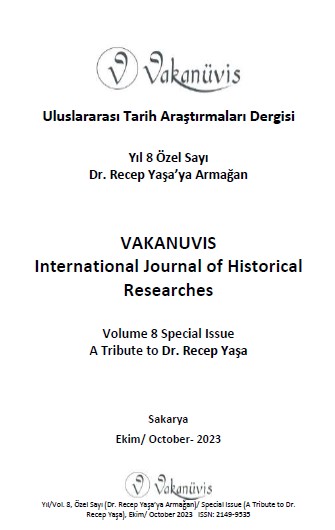Gerçek ve Kurgu Arasında İskender Bey: Margherita Sarrocchi’nin Scandarbeide’si Üzerinden Bir Değerlendirme
İskender Bey Between Fact and Fiction: An Evaluation on Margherita Sarrocchi’s Scanderbeide
Author(s): Ayşe Gül Hüseyniklioğlu, Gaye YavuzcanSubject(s): The Ottoman Empire, Theory of Literature, Italian literature
Published by: Serkan YAZICI
Keywords: Margherita Sarrochi; İskender Bey; Scandarbeide; Ottoman perception;
Summary/Abstract: Skandarbeg was brought up as a Muslim in the Ottoman palace, where he was sent as hostage by his father, but in 1444 he became apostate and rebelled against the Ottoman state. During his struggle with the Ottoman state he received support from the European powers with which he united in opposition to the Ottoman Empire, left influences beyond his age, and Skanderbeg became a national hero in Albanian folklore. His life was written by Demetrio Franco at the end of the fifteenth century and by Marin Barleti at the beginning of the sixteenth century, these works were also spread in Europe. While the Ottoman threat in Europe determined the shaping of the Turkish image, Skanderbeg, beyond his historical personality, has been the subject of works written in various languages in European literature. Among these works is Margherita Sarrochi's Scadarbeide. Margherita Sarrochi’s Scadarbeide will be analyzed in the light of the role of the Turkish image in shaping and expressing itself in Europe in this study. Skanderbeg and his journey to becoming an epic hero will be summarized. Finally, the aspects of the literary presentation of Turks from a European perspective will be determined in Margherita Sarrochi's Scandarbeide.
Journal: Vakanüvis- Uluslararası Tarih Araştırmaları Dergisi
- Issue Year: 8/2023
- Issue No: Sp. Issue
- Page Range: 2685-2729
- Page Count: 45
- Language: Turkish

